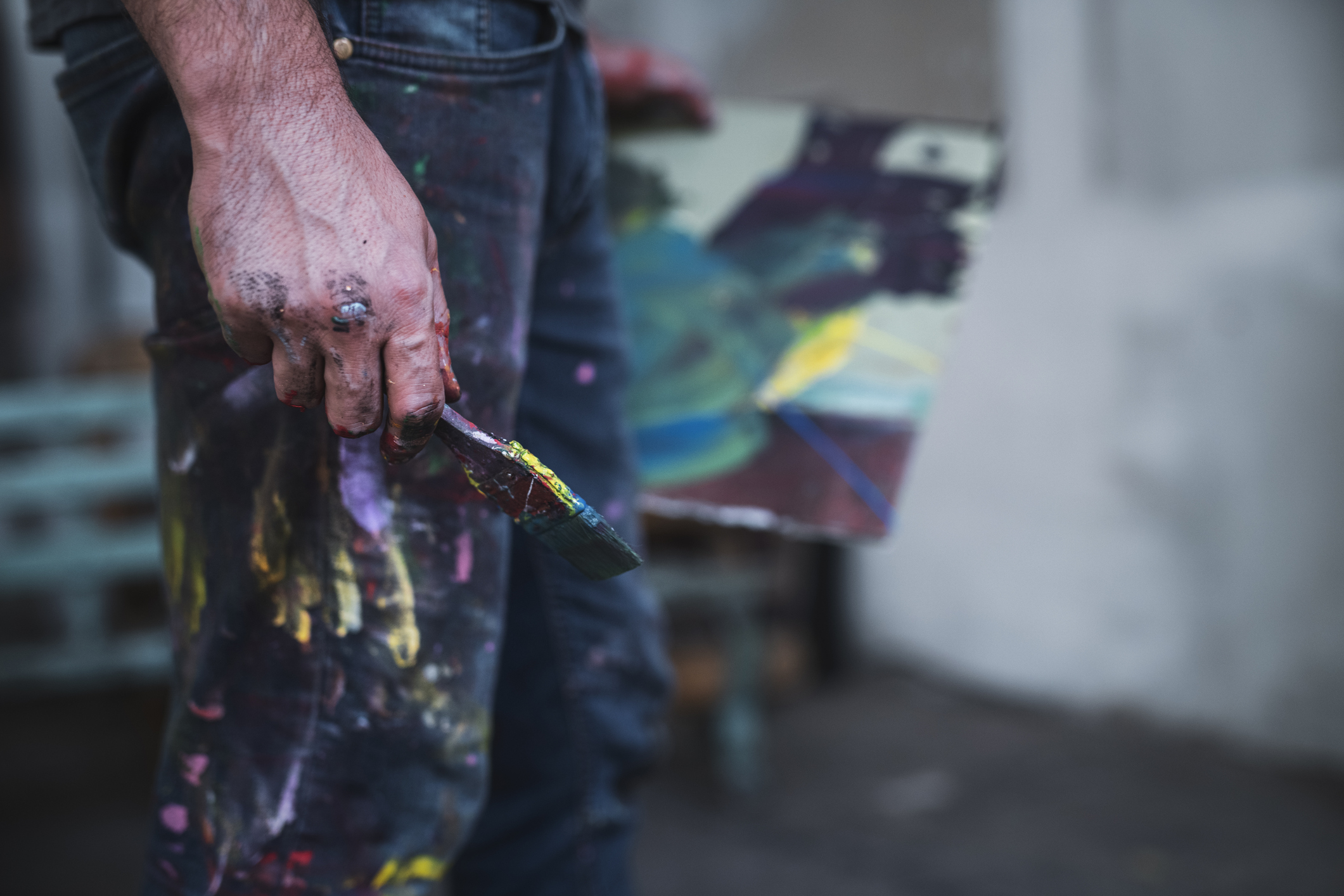Remedying the Right’s disastrous forays into culture.
Building a Nexus of Culture

A guide to reviving art on the Right.
No number of takes can satiate the appetite for analysis as to why the political Right has failed to cultivate an artistic output reflective of their ethical and aesthetic values.
The various diagnoses offered by participants in The American Mind’s ongoing feature on this question include shortcomings with education and funding and a lack of merit on part of the artists themselves. The scope of this piece concerns itself only with solutions, written by me, a successful artist, in consultation with other artists of varying disciplines.
Let me begin by commenting on two supplementary articles that will help contextualize my forthcoming solutions.
In 2022, a curious piece by the anon Cosmo Senex was published in a strange-yet-aesthetically-well-appointed publication called Man’s World. In rather blunt terms, Senex is extremely critical of an ignorant donor class, but also scolds dissident artists for spending too much time engaging in politics instead of improving their crafts. Additionally, he highlights the problem of bad art made by grifters. In a follow-up article at The Asylum, Senex presents a very crass yet esoteric blueprint for the optimal relationship between artists, “the whores,” and the “pimps” of commerce. These pieces are worth reading, because many of the points and solutions offered therein seem to be the result of specific experiences. One key solution is focusing our efforts on the “high arts:”
…tens of millions of dollars are not necessary to move things forward in a meaningful way. We shall address the requisite seed capital first, which should primarily be directed towards the high arts: novels, poetry, classical music composition, painting, sculpting, and theatre, plus their digital analogues.
This is not to say that cinema is not capable of being high art, but it is cost prohibitive. Cinema is also highly susceptible to the influence of the high arts, as most of it is technically derivative of written literature. Aside from the cheaper buy-in, investing in the high arts forces downward cultural pressure on the other artistic mediums and media. A related example exists in the fashion industry: the styles found on the runway at Paris Fashion Week in 2023 end up on the rack of TJ Maxx by 2028.
As Hollywood cycles out of wokeness…there will be greater consideration for stories birthed out of what is known as the Dissident Right. Before this happens though, our culture requires a scandalized high art movement that film auteurs may draw inspiration from.
Assuming that the high arts have the most potential for meaningful cultural gains, and that a political force should be promulgating good art coded as right-wing, here is my suggested course of action.
To address the problem of bad artists, the most important step to take is to create a private chat group featuring curators who can list the dissident/right-wing artists who are ready for prime time. They must begin this culling process to prevent any more cultural/monetary attrition caused by years of failures from Dinesh D’Souza, Daily Wire, and others who have made themselves professional victims of liberal Hollywood bias.
The list they create will necessarily include public-facing artists like Amanda Milius and Fen de Villiers—that is, artists who have actually had success and demonstrated complete command of their craft. It will also include top anons who have been awarded a Passage Prize. This shall save conservative commentators, publications, and institutions from the pain of sorting through mounds of cringey nonsense—they can instead defer to the considered judgements of this elite editorial conclave.
The second step in eliminating bad art concerns the various private chat groups comprised of right-wing artists on X, Signal, and Discord. There are many, and I am witness to marked improvement happening amongst budding artists in these groups, as they are a safe place to receive good faith feedback. The only thing these groups lack are highly successful and famous mentors (with accolades) who have the time to develop the heaps of raw talent in these groups. If this describes you, please reach out to The American Mind to be connected to the most promising artists in these communities.
Moving on to the problem of taste and education, the first order of business is for conservative institutions to dedicate a more significant portion of their output (e.g., tweets, articles, books, etc.) to the arts. This should not just include exposing the masses to the classics, but also writing on largely ignored works like Aristotle’s Poetics. Conservatives are a head-first, heart-second group of people. Aristotle, being their darling, gives them an intellectual framework that can open their hearts to new experiences and feelings. This opening should be exploited by our brightest minds. Our intelligentsia has the power to greatly affect culture by familiarizing readers with the mechanics of drama.
A low-cost option for many institutions is to produce documentaries with their resident experts with the aim of educating conservatives about art. A Heritage Foundation docuseries on modern artists who are incorporating Western traditions instead of adhering to the postmodern cultural regime is a one-two punch of education and promotion. Employing our directors in this way helps them develop their skills as filmmakers. A favorite event during the Claremont Institute’s Lincoln Fellowship is John Ford movie night led by John Marini—this would be a wonderful video series to bring to the public. Hillsdale College already does this to some extent, and it should be copied by other institutions. However, those institutions should not employ in-house dufus filmmakers who are content remaining in their lane as bad propagandists. They should only employ filmmakers who have aspirations to make real movies for mass audiences.
Movie reviewers such as Armond White at National Review should shift from rating the political acceptability of films to making more technical critiques. Yes, it is true that much of Hollywood produces propaganda, and that alone deserves our derision. But critiques on the technical aspects of a film, when directors are doing it wrong and creating an inferior product, assist greatly in educating our people. Critiques like those in Armond’s assessment of Alex Garland’s Civil War don’t go far enough:
You can’t trust Garland, one of the least of the demi-Kubricks. His topical subjects are less outré than Yorgos Lanthimos’s; plus, he’s less of a craftsman than David Fincher, Christopher Nolan, or Jonathan Glazer. Yet, in Civil War, Garland tries for visionary virtuosity, faking rawness and sensationalism, all to predict America’s collapse.
Reviewers should go further with specific examples, such as noting Garland’s pointless rack focus shots on flowers as the protagonist crouches in a field to evade sniper fire. Shots like these make him a mere “demi-Kubrick,” because they are stylized for the sake of stylization rather than serving a dramatic purpose. Making such critiques also has the benefit of tweaking celebrated leftists who prize themselves as the purveyors of taste. You want to cause crippling depression in an enemy artist? Rip their work apart from a technical perspective. When people on our side learn what “rack focus” means, we are making serious gains in developing their taste.
A comprehensive arts education strategy should exploit our control of allied colleges. Appeals need to be made to guys like Chris Rufo and Joe Lonsdale to start artist-in-residency programs. A visual artist, a composer, and a writer (or a novelist, playwright, or poet) could be each given a sum of money to create new works over the course of a year that are then presented to faculty/students/donors. Their duties would also include lectures, recitals, and readings. Commissions are a very big deal to artists as they are their primary source of income. In terms of college budgets, dividing up $250,000 amongst three resident artists according to their discipline (music requiring the most for hiring performers) is a rounding error. It gainfully employs our talented artists. It credentials them, increasing their chances for future commissions and overall cultural relevance. It facilitates network effects between artists, future leaders these institutions purport to train, academics, and donors. The sum of these benefits can turbocharge the reshaping of the cultural landscape.
One VERY important factor in my proposal is the necessity of oversight by the political Right (or simply deferring to the aforementioned elite editorial conclave). This simply will not work if the artists-in-residency are chosen by faculty that is politically Left. And under no circumstances can there be any nonsense art, postmodernism, or noise music.
Education through social media is also key. There are a host of architecture accounts on X that have generated much interest in the importance of beauty in public buildings. This model should extend out to the other arts. Jack Posobiec is very good at promoting artists, even new ones with little or no following. Others with large followings should follow his example. As we all know, attention is influence, and giving good artists lots of attention will increase their cultural influence.
Finally, the issue with donors (or investors) is a massive (and entirely separate) problem. While I am sympathetic to the often-lamented idea that they will never help, there is reason to believe donor interest can be piqued. Right now, outfits like TPUSA, with their laser shows and rap music, soak up much of the attention. It’s all spectacle, because that’s what most people have been told to value.
Prompting conservatives to refocus on the Western canon and enhance their understanding of the nuances of aesthetic excellence will help foster the patronage of emerging artists. The artists cannot do this on their own—their job is to create art, not run their own distribution and marketing campaigns. It requires a concerted effort from our political commentariat and institutions to get our good artists as much attention as possible, which may attract donors/investors.
As these solutions are implemented, a nexus should emerge that will not only disrupt the current cultural regime but produce art that enriches society—emanating beyond conservative audiences into the general population.
The American Mind presents a range of perspectives. Views are writers’ own and do not necessarily represent those of The Claremont Institute.
The American Mind is a publication of the Claremont Institute, a non-profit 501(c)(3) organization, dedicated to restoring the principles of the American Founding to their rightful, preeminent authority in our national life. Interested in supporting our work? Gifts to the Claremont Institute are tax-deductible.
The Left’s war on culture is a historic opportunity for the Right.
Between provocation and propaganda.
Conservatives must snub political kitsch for aesthetic greatness.
What we talk about when we talk about culture.
Conservative artists are missing the bigger picture.






